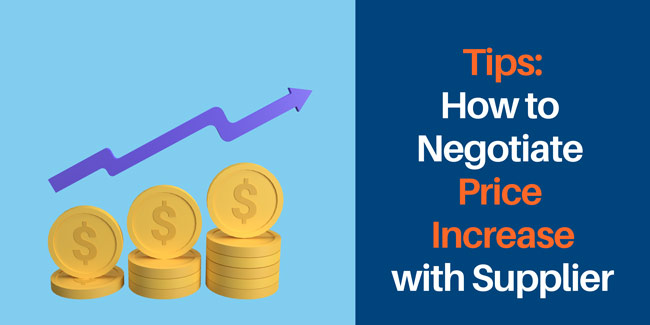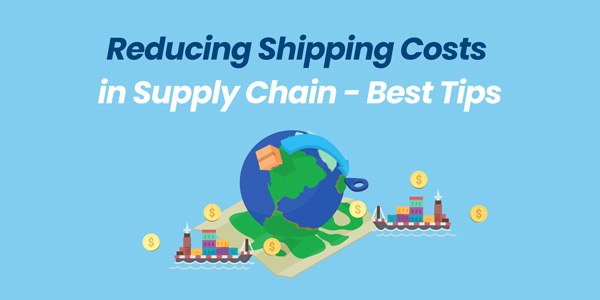How to Negotiate Price Increases with Suppliers Effectively
- Date:
- Author: SVI Content Team
- Share:
Supplier price increases are a common challenge in global sourcing, especially during market disruptions or raw material shortages. What catches many importers off guard is how suddenly these increases appear, often without warning or solid justification.
So, how to negotiate a price increase with a supplier while keeping your unit costs under control? In this guide, we’ll walk you through practical steps to prepare before the meeting, hold firm during negotiation, and secure long-term stability afterward.
Why Suppliers Ask for Price Increases (Quick Review)
1) Common Reasons
Suppliers raise prices for a variety of reasons, most of which are related to an increase in their own operational costs or changes in market dynamics.
- Material price increases/shortages. Raw material swings can raise input costs quickly. Scarcity forces suppliers to pay more to secure inventory.
- Labor and overhead costs. Higher minimum wages, tighter labor markets, and rising utilities, rent, or compliance costs push costs up.
- Exchange rates. Currency volatility can erode local margins. Some suppliers from China add an FX (foreign exchange) buffer of 2-5% when exposure is real or uncertain, according to WorldFirst.
- Margins pressure. If a supplier has absorbed past cost rises, they may eventually raise prices to remain a financially healthy and viable business partner.
- Shipping capacity problems. when a supplier manages door-to-door logistics or handles domestic freight to port, they might bundle logistics costs into the product price.
2) Risks of Saying “no” too Fast
- Lose priority in production. Suppliers may reallocate capacity to customers who accept new terms.
- Longer product lead time. Orders can be delayed in scheduling or enter production slowdowns as factories prioritize high-margin clients.
- Stalled negotiations. Smaller factories with meager profits may stop negotiating due to a tough attitude at the beginning.
- Affect the supply chain continuity. A blunt rejection not only slows down production, but also increases overall risk with the absence of backup suppliers.
❗ Notice ❗
When price increases are related to the market trends, regularly reviewing market conditions.
If trends of material or freight drop, you should proactively renegotiate prices downward with factories to ensure you’re paying fair market value.
Phase 1: Preparation Before Negotiation
1) Understand Why and Verify the Claim
Before engaging, trace the real cause of the change and see if it adds up.
- Ask for a detailed cost breakdown. This should itemize materials, labor, energy, overhead, FX, margin, logistics, and compliance.
- Verify each claim against market benchmarks, such as commodity indices, government wage bulletins, or past purchase prices.
- Check if other suppliers in the same category are raising prices; if not, it may be a factory-specific issue, not an industry-wide one.
- Run a cost analysis to estimate the contribution of each component to the final cost. For instance, if raw materials make up 40% of the total cost and their price rises 10%, your product cost should only rise about 4%, not 10%.
2) Know Your Leverage and Best Alternatives
- Assess your importance to the supplier based on order volume, payment reliability, or growth potential. Suppliers will hesitate to risk losing a large, stable order.
- Identify backup suppliers or regions. Alternatives give you power to negotiate supplier price increases.
- Quietly refresh Request for Quotations (RFQs) with 2 to 3 other suppliers (same specification) to gain accurate quotes and updated market pricing.
Phase 2: Negotiation During the Meeting
1) Collaborate, Don’t Confront
Start calm and factual. Let the supplier explain their side before you challenge any figures.
Your tone should show partnership, not pressure. The goal is to find a sustainable path forward, not to “win” at the supplier’s expense.
2) Negotiate Firmly with Facts
Once they’ve made their case, introduce your verified understanding. Use data (commodity prices, material trends, etc.) to scrutinize their claims and narrow the discussion to true cost drivers. This allows you to control the discussion’s logic and keeps the negotiation grounded in fairness and facts.
3) Show Your Value Proposition
The purpose of the discussion is not just to defend your desired pricing, but to show suppliers that continuing to work with you is in their best interest.
- Offer larger or longer-term contracts in exchange for locked prices.
- Consolidate shipments to reduce handling and logistics costs.
- Offer faster payments for small discounts.
4) Implement Stage Acceptance
Negotiate gradual increases instead of one-time hikes, such as:
- SKU segmentation: Apply increases only to affected product categories or low-volume items.
- Temporary surcharge: Accept a short-term fee with a fixed review date.
- Phased increase: Absorb 2% now and review the remaining 3% later based on verified inputs.
- Shared improvement plan: Accept some increase now if you agree to a joint cost-reduction project within a certain deadline.
5) Secure Non-Price Value
When some increase is inevitable, gain value elsewhere. Ask for trade-offs such as:
- Better payment or delivery terms.
- Free or discounted pre-shipment inspections.
- Commitments to better defect control or service support.
- Insert “cost adjustment” or “price freeze” clauses in your sourcing contracts.
Need Help for Your Sourcing Project?
Let SVI Global find the right suppliers and manage your project.
We guarantee quality and on-time delivery!
Phase 3: After Negotiation
Once the discussion ends, the real work begins. How you follow up determines whether the agreement holds and whether your supplier views you as a trusted, long-term partner.
1) Confirm Everything in Writing
Don’t rely on verbal agreements. Update the contract or PO annex with the new price, effective dates, review schedule, and any traded value. Ensure finance validates invoices against the agreement.
2) Strengthen the Relationship
Even tough negotiations can end positively. Send a follow-up note summarizing the agreement and thanking the supplier. That keeps trust and reduces friction.
3) Conduct a Debrief
Reflect internally with your team on how to respond to supplier price increase. Why did this increase happen? Could it have been prevented?
Use lessons to:
- Build dual sourcing for key components to reduce dependency.
- Improve forecasting and contract structure to get stable demand.
- Refine contract terms with cost-adjustment or index-based clauses.
When to Seek Help from a Sourcing Partner
Negotiating price increases is challenging when you lack cost data, local insights, or experience dealing with local factories. Without these, discussions can easily stall and threaten supply chain continuity.
If involving a sourcing agent, experts can help you:
- Independently verify cost drivers and factory claims.
- Audit cost structures and benchmark prices in the industry.
- Manage price negotiation as a mediator to get better terms and maintain relationships.
- Oversee production to ensure quality consistency throughout the process.
- Vet and diversify suppliers to minimize overreliance on one factory or region.
If your supplier is critical and negotiations aren’t yielding transparency, competitive rates, or long-term security, engaging a sourcing company protects your business interests and stabilizes your supply chain.
SVI Global, for example, supports overseas importers with cost validation, factory audits, and order management with long-term negotiation. With suppliers across multiple categories and countries, we keep updated tracking of unit costs, production status, inspections, and shipments to help you make informed sourcing decisions and get competitive prices.
Don’t let pricing setbacks disrupt your operations. A sourcing company can open access to reliable manufacturers and strengthen your overall supply chain performance.
Conclusion
Knowing how to negotiate price increase with supplier takes skill, preparation, and strategy. While cost hikes are sometimes inevitable, not every increase is justified.
The key is verification and balance: validate the reasons behind cost changes, compare data with market trends, and assess whether your supplier is offering fair value in return. Follow this guide, and learn how to reject price increase from supplier step by step.
If the increase feels excessive or negotiations reach a dead end, consider your leverage, relationship value, and the option of working with a sourcing partner. A trusted sourcing agent can help you ensure pricing transparency, manage supplier talks, and free up your time to focus on growth and core business priorities.







